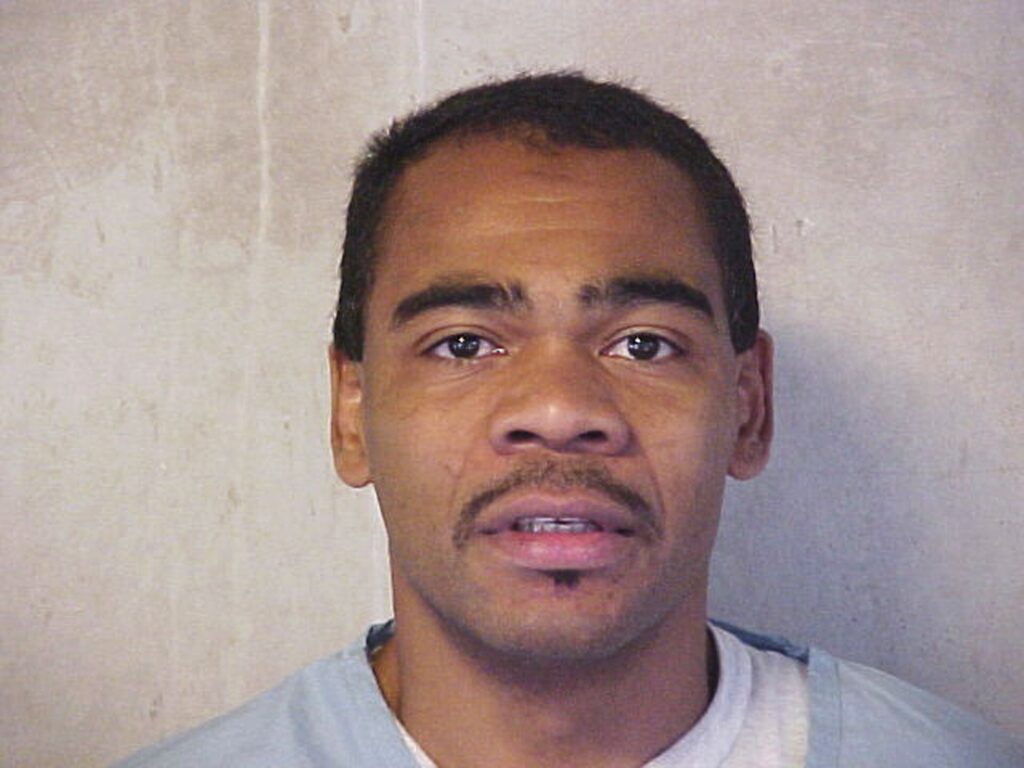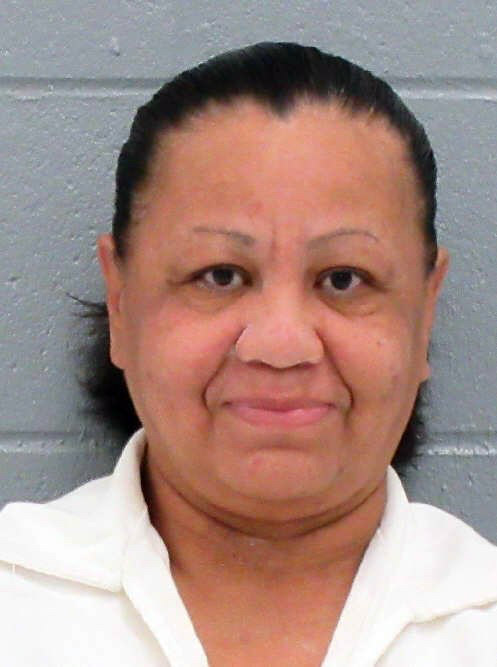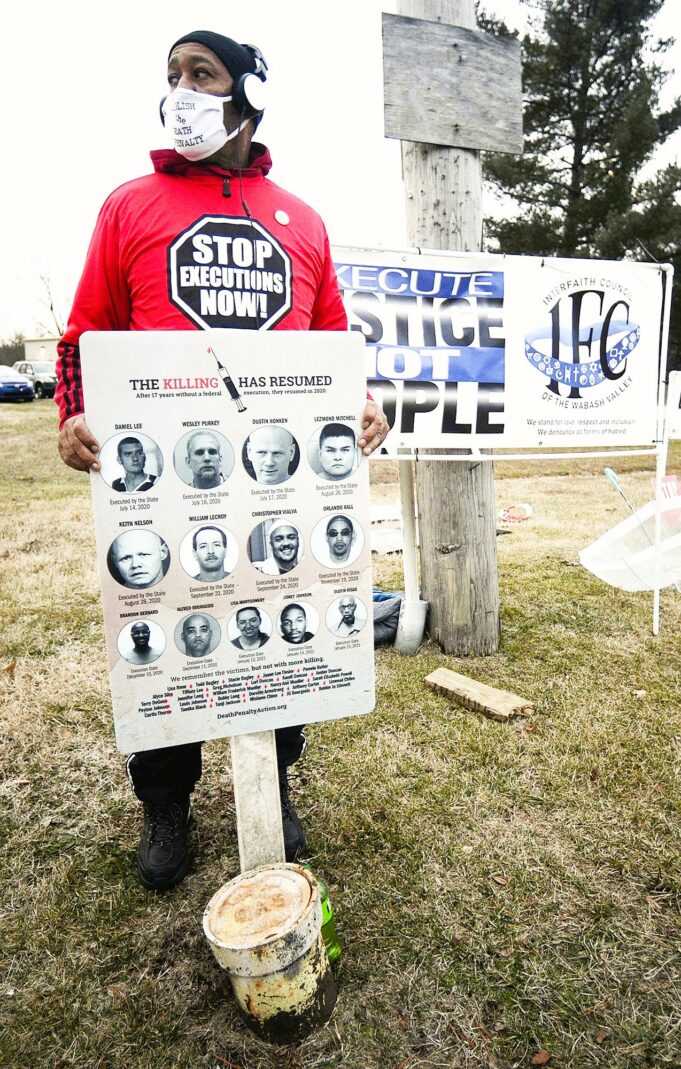21st Century Lynching: Blacks,
Latinos disproportionately executed
on death row, new report states
- July 5, 2022
On April 17, 1997, 19-year-old Billie Allen, a Black man, was convicted
on two charges: killing a security guard while committing an armed bank
robbery and the use of a firearm to commit a crime. A year later, a judge
imposed the federal death penalty.
A new report by Amnesty International goes into detail about Mr. Allen’s
case. Upon his arrest, he was handcuffed to a table in the interrogation
room for seven to eight hours without a lawyer present. Everyone involved
in the case—the prosecutors, the judge and the defense team—were all
White, the report points out. So was the murder victim. The crime took
place in St. Louis, Missouri. Despite St. Louis being about 46 percent Black
and 46 percent White, according to the U.S. Census Bureau, the jury was
pulled from the predominately White part of the state.

Kevin Strickland is pictured in an interview room at Western
Missouri Correctional Center on Nov. 5, 2019, in Cameron, Mo.
A judge’s decision on Nov. 23, 2021, to release the longtime inmate
was made possible by a new Missouri law intended to free people
who were imprisoned for crimes they didn’t commit. Strickland,
was convicted in 1979 of a triple murder in Kansas City.
Photo: James Wooldridge/The Kansas City Star via AP, File
“Billie Allen’s jury consisted of 10 white jurors and two African American
jurors, after the prosecution used peremptory challenges to dismiss five
of the eight African Americans at jury selection,” Amnesty’s report states.
Mr. Allen wore an electro-shock stun belt the entirety of his trial.
The prosecution described the young Black man as a “murderous dog.”
Twenty-five years later, Mr. Allen is still on death row, though according
to both the Amnesty report and a change.org petition with more than
150,000 signatures: one, DNA testing excludes Mr. Allen as the assailant;
two, a security guard came forward stating he saw Mr. Allen at a shopping
mall miles away from the scene of the crime; and three, witness descriptions
do not match Mr. Allen.
But Mr. Allen’s case is not an outlier when it comes to the death penalty.
According to Amnesty International’s report, titled, “The power of example:
Whither the Biden death penalty promise,” while Black people make up
approximately 13 percent of the U.S. population, almost half of 539
defendants whose cases were authorized for a federal capital prosecution
between 1988 and April 2021 were Black. Though Latinos make up
almost 19 percent of the U.S. population, 18 percent of the defendants
were Latino and 28 percent were White.

In this July 8, 2004 file photo provided by the Oklahoma
Department of Corrections, Patrick Dwyane Murphy is pictured
in a photo in McAlester, Okla. Murphy, a citizen of the Muscogee
Nation and an Oklahoma death row inmate whose legal challenge
led to a historic U.S. Supreme Court ruling on tribal sovereignty
has been convicted in federal court. A federal jury in Muskogee on
Aug. 5, 2021, found Murphy guilty of murder and kidnapping in the
1999 killing of George Jacobs in McIntosh County.
Photo: Oklahoma Department of Corrections via AP File
“Of the 16 people put to death in federal executions since 2001,
seven were White, seven were Black, one was Latino and one was
Native American,” the report states.
Out of the more than 1,500 executions that have been carried out
since the 1970s on both the federal and state levels, 522, or about a
third of those executed were Black and 128 were Latino. More than
80 percent occurred in southern states, and more than 75 percent
were of people convicted of crimes involving White victims,
according to Amnesty’s report.
“We are obviously not surprised by any of those statistics. That’s the
reality of White supremacy in America. And it’s sort of very interesting
that you have a Supreme Court that weighs in on the side of being
pro-life but will not put a moratorium in place on the death penalty.
So, it’s basically hypocrisy at its best and exposes sort of the racial
bias that is engaged in this entire debate and this entire approach to
capital punishment,” Reverend Graylan Hagler, senior minister at
Plymouth Congregational United Church of Christ, said to The Final Call.
He attributed the racial disparities to poverty and not being able to
afford a private attorney.
“You basically get an overworked, overtaxed public defender and you
end up very often being convicted, very often going to jail quite a bit
and in capital cases you go on to death row,” he said.
Alexis Hoag, professor of law at Brooklyn Law School, has spent more
than a decade representing individuals sentenced to death. She told
The Final Call the death penalty has always been about exerting race,
power and control.
“The history of the death penalty in this country has really been shaped
by this presumption of Black people being dangerous and criminal,”
she said. “It’s been used as a tool to control Black people. When you look
at the use of capital punishment coming out of a long period of racial
terrorism and lynching targeting Black men largely accused falsely of
raping White women or some sort of social transgression. And as lynching
decreased, we saw an increase in states’ use of capital punishment.”
Ms. Hoag described the widespread racial terrorism directed at Black
people, from the Red Summer in 1919 to the Tulsa Race Massacre in 1921.
“We saw widespread lethal violence targeting Black people, Black
communities. And so it was around that time, then, that the legal system
brought lynching into the courtroom, the courthouse doors, and gave
this appearance of due process,” she said. “Let’s assign counsel. Let’s
pull in a jury. Let’s have a judge. And then we can ultimately have the
same result, which is the execution of a Black person.”
The majority of death penalty cases are at the state level, but Ms. Hoag
said federal law can be triggered if someone already incarcerated commits
murder in the facility or by people crossing state lines.
Hollow promises
Mr. Allen is a victim of the U.S. government’s empty promises.
On June 29, 1972, in the case Furman v. Georgia, the U.S. Supreme
Court ruled that the death penalty was unconstitutional. In the case
Gregg v. Georgia just four years later, the court claimed that Georgia’s
death penalty statute was not “cruel and unusual” punishment and
that it was constitutional.
It has been 50 years since Furman v. Georgia and the U.S. government
has done little to abolish the federal death penalty or commute existing
sentences, despite promises by current president Joe Biden. When he ran
for president, he stated that if elected, he would “pass legislation to eliminate
the death penalty at the federal level and incentivize states to follow the
federal government’s example,” a commitment that was confirmed to the
United Nations.
“However, except for a temporary moratorium on federal executions, in the
18 months since he entered the White House as President, little progress
on his abolitionist pledge has been visible,” states Amnesty International’s
report. “What is more, his administration’s defense of the sentences of all
of those currently on federal death row—opposing relief and moving them
closer to execution – is cause for concern. Time is of the essence, and
it is passing.”
Amnesty International is calling on President Biden to commute
all federal death sentences, including the death sentence of Mr. Allen,
and to stop all federal activities that support or facilitate state executions.
“People who are victims of the criminal injustice system are very,
very low in terms of the priorities of politicians,” stated Rev. Hagler.
Ms. Hoag explained that two prominent federal capital cases may be
preventing the president from abolishing the death penalty: Dylann Roof,
who was convicted and sentenced to death for shooting and killing nine
Black people in a Charleston, S.C. church, and Dzhokhar Tsarnaev,
who was convicted and sentenced to death for his participation in the
2013 Boston Marathon bombings.
“I think Biden doesn’t want to be the one that intervenes in the federal
death penalty that would then result in those two individuals, Mr. Roof
and Mr. Tsarnaev, no longer being on death row. And that’s unfortunate,
because the death penalty continues to be used as a tool to target the
most marginalized people in this country,” Ms. Hoag said.
Attorney Athill Muhammad from Houston, Texas, was on the team of two
death penalty cases involving the same person, Tyrone M. Williams.
Mr. Williams, a Black man, was initially tried in 2005 for the deaths
of 19 “illegal immigrants” who lost their lives in the back of his
tractor-trailer. He was the only one possibly facing the death penalty
out of 13 other defendants.
“My experience has been, from a personal standpoint, the most pressure
that I think an attorney can be under, because you literally have
somebody’s life in your hands,” Atty. Muhammad said.


This undated handout photo provided by the Texas Department of
Criminal Justice shows Melissa Lucio. Lawyers for Lucio, who has
denied she fatally beat her 2-year-old daughter are hopeful new evidence
will stop her execution on April 27.
(Texas Department of Criminal Justice via AP)
During the first trial, the judge was a Black woman and much of the court
consisted of Blacks and Mexicans. The jury never returned a verdict,
which resulted in a second trial, Atty. Muhammad said. The case was
given to a White judge, and the jury found Mr. Williams guilty. In the end,
the death penalty was not pursued, and Mr. Williams was convicted of life
without parole.
“It’s difficult, especially when you begin to know the person as a human,”
Atty. Muhammad expressed. “Once you know that person and then know
that they’re trying to put this person to death, you’re like, well,
wait a minute here.”
Death penalty alternatives
Amnesty International’s recommendations for President Biden include
working with members of Congress to fully abolish the death penalty at
the federal level and supporting a public information campaign about
abolition, aimed at showing the facts about arbitrariness, racial bias and
impact, errors and other realities of capital justice, as well as about the
requirements of international human rights law.
Other recommendations included for the U.S. Congress to enact
legislation to abolish the federal death penalty and for the Department
of Justice to maintain the moratorium on executions until abolition of
the federal death penalty is signed into law and all federal death sentences
have been commuted.
Ms. Hoag recommended alternative punishments to the death penalty,
such as lengthy prison sentences and a life-term in prison. But she
questioned, “How do we decide what is enough punishment, if you
sentenced someone to 50 years?”
“The crime doesn’t change. The nature of the murder, the aggravated
murder, doesn’t change. But surely during a 50-year period of time, or
some other lengthy period of time, someone perhaps has the ability
to redeem themselves,” she said.

